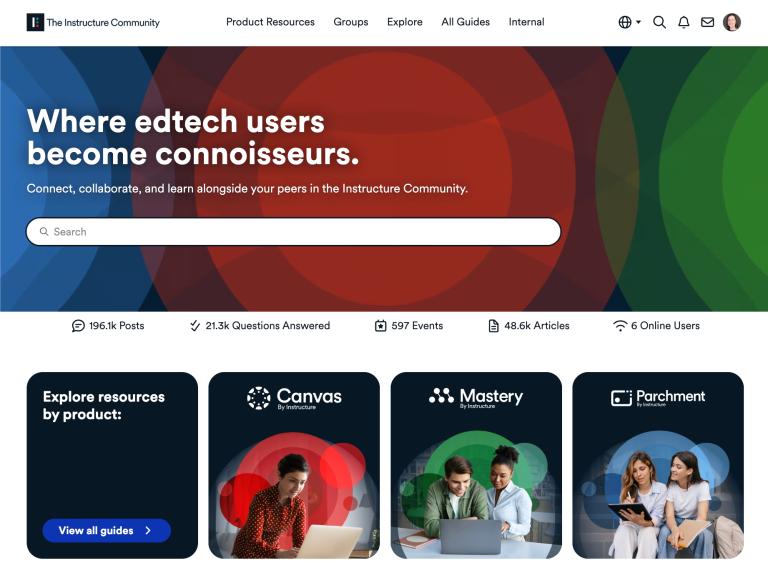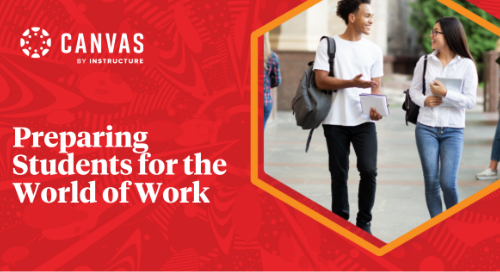The experiences of the past few years have indelibly changed higher education. As we move forward, understanding and preparing for what students believe they need to be successful and engaged is more critically important.
While grades remain a top priority—especially to students—administrators, faculty, and students are defining success more holistically and adjusting campus support to match that definition of success and to show the value of a degree.
Across the globe, students, faculty, and administrators say that the three most important factors contributing to student success include:
-
Career readiness
-
Skill competency
-
Student educational goals
That’s according to results from our 2022 global study, The State of Student Success & Engagement in Higher Education, now in its third year. For the study, we worked with Hanover Research, seeking input from 7,572 students, administrators, and faculty from two-year, four-year, public, and private higher education institutions across 23 countries. Each year, our goal for the survey is to define measurements of student success, identify factors for engagement, and shed light on the path ahead for higher education
Comparing 2020-2022 Top Factors of Student Success
Over the three years included in our research, the top factors that contribute to student success include:
2022:
1. Work/Career readiness (82%)
2. Skill competency (81%)
3. Student Educational Goals (79%)
2021:
1. Work/Career readiness (84%)
2. Skill competency (81%)*
3. Holistic development (80%)
2020:
1. Work/Career readiness (78%)
2. Student educational goals (76%)
3. Holistic development (75%)
Over three years, the top factors for student success factors have slightly evolved. For example, from 2021 to 2022, the percentage of respondents who listed career readiness as a primary indicator of student success fell by 2%. Those indicating work readiness as important say being prepared for employment is the mark of a student who has succeeded.
While the two top factors remain similar from 2021, the importance of student educational goals has supplanted holistic well-being as the third most important factor. Additionally, student educational goals replaced holistic development as the third most important factor in defining student success, with student educational goals rising by 3%.
The rise of student educational goals can be attributed to the increase in non-traditional students and the increase in individual paths to education student by student. To that end, increased evidence of skill-based learning exists in that nearly half of institutions offer non-degree programs to supplement traditional two-year to four-year offerings. Additionally, 68% of respondents say having definable skills is more important than course titles or a degree.
At the same time, administrators (87%) place significantly higher importance on skill competency than students (81%).
Student Success Factors Going Forward
Respondents of our survey predict that work-career readiness (71%), skill competency (69%), and skill diversity (68%) will continue to become more important in the coming year.
Within Latin America (LATAM), 81% of respondents placed significantly greater importance on skill competency compared to respondents in other regions.
Further, administrators (56%) are significantly more likely to believe student retention rates will be more important moving forward than students (42%).
Regional Support for Student Success
When it comes to supporting students, there are many methods used across the regions, including:
-
Student academic support (52%)
-
Grants for financially disadvantaged students (46%)
-
Educational technology resources (39%)
-
General well-being resources and internship/ externship placement (36%)
-
Laptops/tablets for student use (35%)
-
Career development services (34%)
-
Student healthcare options (34%)
Different regions around the world rely on culturally appropriate academic resources to support student success. For example, North American (NORAM) institutions (44%) are significantly more likely to provide general well-being resources, while LATAM institutions prioritize grants (56%) to support student success.
The Rise of Skills-Based Learning
In previous reports, we forecasted that skills-based learning would be more prominent in the future, and in 2022, we saw that come to light. With student success continuing to be defined by career readiness, skills-based learning initiatives can help students demonstrate competency to potential employers and show mastery of skills—sometimes in place of a traditional degree.
Today’s learners are eager to pursue education via nontraditional two- or four-year programs and increasingly turn to YouTube, certificate programs, internships, bootcamps, and apprenticeships in their pursuit of employable skills, which is important to note as institutions consider how they will meet changing student demand.
Student Success Outlook over the Next 12 Months
When asked, “Which of the following do you believe will become more or less important to measuring student success in the next 12 months?,” responses have changed over the past three years.
-
Work/career readiness (2022: 71% vs. 2021: 71% vs. 2020: 66%),
-
Skill competency (2022: 69% vs. 2021: 69% vs. 2020: N/A),
-
Skill diversity (2022: 69% vs. 2021:69% vs 2020: N/A), and
-
Holistic development (2022: 66% vs. 2021: 67% vs. 2020: 60%) were the factors noted most often.
The data shows that offering skills-based learning programs and recognizing the increased demand for a positive ROI for higher education are the cornerstones for the great reset of global higher education.
Skills Building at Coastal Alabama Community College
Coastal Alabama Community College is bridging the gap between classrooms and careers using online skills-building programs from Instructure. The institution uses Canvas to customize course content for specific organizations to more closely align student achievement and career readiness.
Their focus: expanding the concept of student success to be less about graduation rates and high GPAs, and more about the application of learning in a real-world setting. According to our research, that’s the exact approach students are looking for.
Next Steps for Career Readiness
Ultimately, students need to feel that their academic pursuit will prepare them for the workforce. Prioritizing outcomes-based education is one way to help ensure students graduate with the skills necessary to get a job in their desired field of study and succeed.
Higher education institutions today are increasingly prioritizing ways to evolve education programs to accommodate student demand for certificates, boot camps, and other skills-based methods of preparing for careers or up-skilling. Offering micro-certificates or badges in specialty areas, for example, is one method that these universities are employing.
A robust job market and ongoing worker shortages will continue to make it easier for students to step into careers at a rapid pace. Partnerships with various industries or businesses can help bridge the gap while supporting the continued value of a higher education degree.
Additionally, continuing to support student academic success through methods such as career development services, internship placements, and employing educational technology resources to bridge socioeconomic gaps and support all students, will also help move education forward.
And finally, the focus on holistic well-being continues to play an important role in student success and engagement. The strides made during the pandemic to recognize the importance of where students are coming from, their mental wellbeing, available support systems, and personal development alongside their career goals, should be carried forward and expanded on.
Download the full report to get more insights.
Related Content
 inst-3step.jpg
inst-3step.jpgBlogs
 13lmsfeaturesthatbenefitstudentlearning.jpg
13lmsfeaturesthatbenefitstudentlearning.jpgBlogs
 community-homepage.jpg
community-homepage.jpgBlogs
